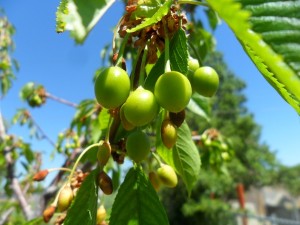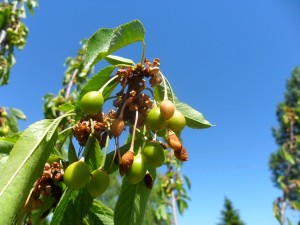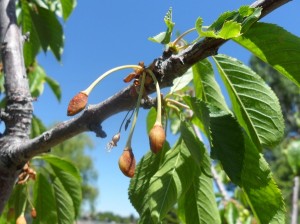“We still have quite a few cherries (in this year’s crop), but it’s down from what I normally see. Maybe two-thirds of what we had last year.”-Paul Pinard, cherry farmer Emmett, Idaho
Because of a lack of global warming in the Pacific Northwest of the United States, there are going to be a lot fewer cherries, and a lot later. The cooler than normal weather is affecting the $573 million cherry market.

Chubbuck, Idaho, July 2, 2011
Last year, in Washington, Idaho, Montana and Utah, as many as 7 million boxes of cherries were packed. This year the commercial cherry farmers will be lucky to get 2 million.
On top of that, cherry picking season ends in June, but not this year, many cherries aren’t even ready.
I can vouch for that. I have a cherry tree, and I’ve been wondering what the heck is going on. Not only have the cherries not fully developed, but they’re shriveling and dying. Normally, by the end of May I’m swamped with too many cherries for me and my kids to eat, but this year…it looks like nothing.

Chubbuck, Idaho, July 2, 2011
Another factor in driving up prices for cherries, is that demand is up.
But it’s not just Cherries that are being negatively affected. The asparagus picking started late, and northwest growers associations are reporting delays in melons, peaches and corn.

So even if you try to grow your own, to keep from paying higher prices at he store, Mother Earth just won’t let it happen.


